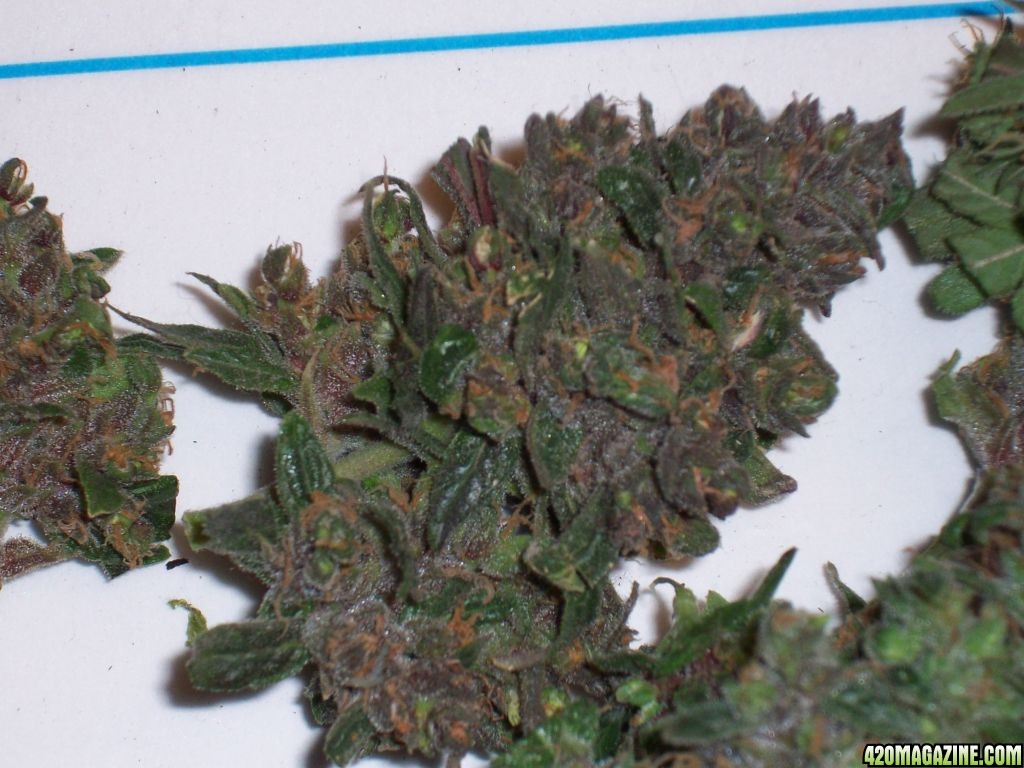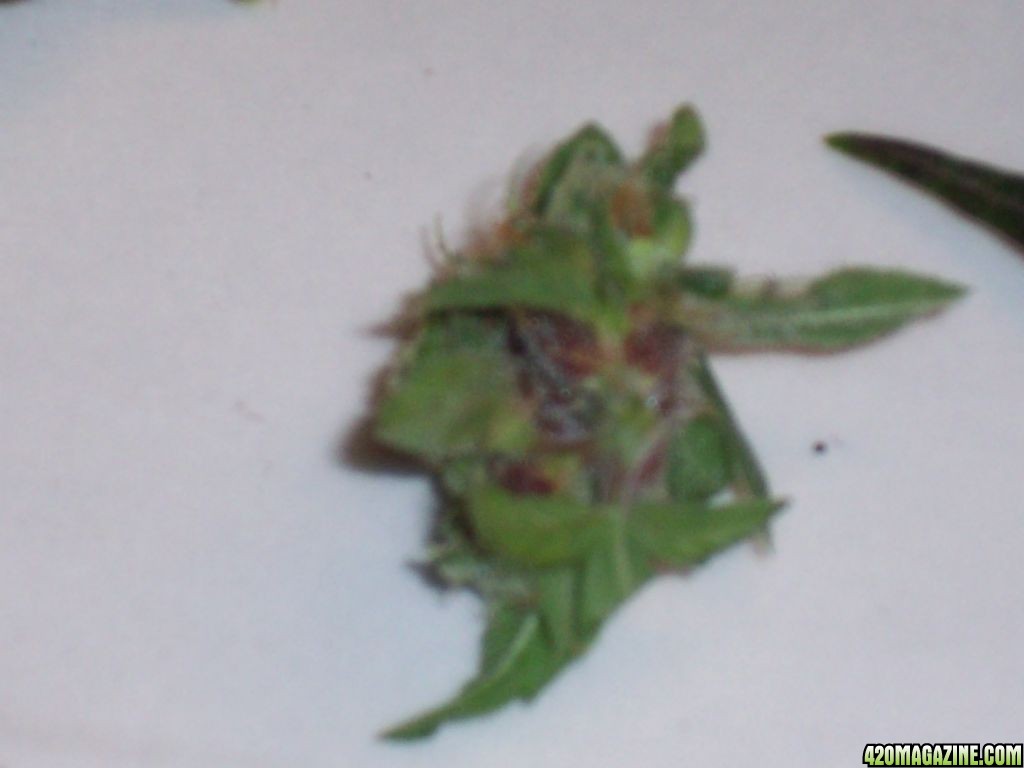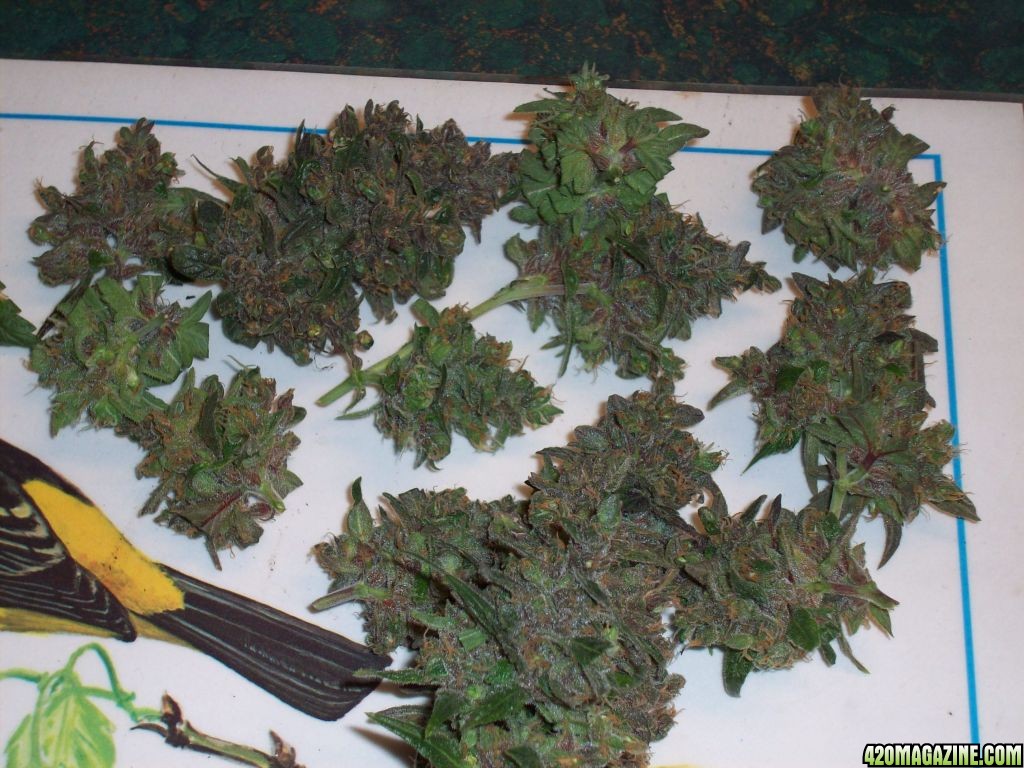Jasonlee247
New Member
From a VERY well educated source:
Purple Cannabis
The origins of purple cannabis are as much of a mystery as the origins of the plant itself. However, purpling is as natural as the changing colors on the leaves of deciduous trees in autumn, which is attributed in part to the pigment anthocyanin. Anthocyanin expression is controlled by both genetic and environmental factors. Purpling is a simple dominant Mendelian trait, with quantitative expression.
Environmental Factors
Several pigments are responsible for color in plants: chlorophyll, carotene, xanthophyll, and anthocyanins. Chlorophyll is the pigment in chloroplasts of plants that reflects green light. Plants use the energy absorbed by chlorophyll in photosynthesis to produce food for their growth and development. It is continually broken down during photosynthesis and being replenished by the plant.
Carotene and xanthophyll are pigments that reflect orange and yellow light respectively. Both are present in the chloroplasts, with chlorophyll enabling the plant to absorb a wider range of wavelengths of light and thus capture more energy. These pigments are present in such small quantities that the more dominant chlorophyll typically masks them.
During flowering, with the passing of summer, days become shorter. The phytochromes, the light-sensing mechanisms in leaves, recognize the shorter day lengths. The shorter days and lower temperatures arrest chlorophyll production. Chlorophyll breaks down faster than it is replaced, allowing the yellow and orange pigments to be unmasked.
The molecules reflecting red wavelengths, anthocyanins, are water-soluble pigments that occur in the cell sap, creating the red, pink, and purple hues. These pigments may not be present during the summer, or vegetative cycle, but their formation is encouraged during a succession of cool nights and sunny days. During these days when photosynthesis and chlorophyll production are decreasing, an abundance of sugars accumulates in the leaf. The cool nights promote a separation layer of cells in the petiole—where the leaf attaches to the stem—that prevents sugar from flowing out of the leaf, and also arrests the flow of nutrients into the leaf. The formation of anthocyanin requires bright light, a diminishing water supply, and the accumulation of sugars trapped in the leaf.
Another factor that can cause purpling is nutrient deficiency, generally phosphorus. Although these stunted plants may bedazzle the novice, they are typically quite distinguishable from naturally occurring anthocyanin expression, due to the other visible adverse side effects of nutrient deficiency, such as leaf and bud malformation and low calyx-to-leaf ratios.
I couldn't have said it better myself.
Purple Cannabis
The origins of purple cannabis are as much of a mystery as the origins of the plant itself. However, purpling is as natural as the changing colors on the leaves of deciduous trees in autumn, which is attributed in part to the pigment anthocyanin. Anthocyanin expression is controlled by both genetic and environmental factors. Purpling is a simple dominant Mendelian trait, with quantitative expression.
Environmental Factors
Several pigments are responsible for color in plants: chlorophyll, carotene, xanthophyll, and anthocyanins. Chlorophyll is the pigment in chloroplasts of plants that reflects green light. Plants use the energy absorbed by chlorophyll in photosynthesis to produce food for their growth and development. It is continually broken down during photosynthesis and being replenished by the plant.
Carotene and xanthophyll are pigments that reflect orange and yellow light respectively. Both are present in the chloroplasts, with chlorophyll enabling the plant to absorb a wider range of wavelengths of light and thus capture more energy. These pigments are present in such small quantities that the more dominant chlorophyll typically masks them.
During flowering, with the passing of summer, days become shorter. The phytochromes, the light-sensing mechanisms in leaves, recognize the shorter day lengths. The shorter days and lower temperatures arrest chlorophyll production. Chlorophyll breaks down faster than it is replaced, allowing the yellow and orange pigments to be unmasked.
The molecules reflecting red wavelengths, anthocyanins, are water-soluble pigments that occur in the cell sap, creating the red, pink, and purple hues. These pigments may not be present during the summer, or vegetative cycle, but their formation is encouraged during a succession of cool nights and sunny days. During these days when photosynthesis and chlorophyll production are decreasing, an abundance of sugars accumulates in the leaf. The cool nights promote a separation layer of cells in the petiole—where the leaf attaches to the stem—that prevents sugar from flowing out of the leaf, and also arrests the flow of nutrients into the leaf. The formation of anthocyanin requires bright light, a diminishing water supply, and the accumulation of sugars trapped in the leaf.
Another factor that can cause purpling is nutrient deficiency, generally phosphorus. Although these stunted plants may bedazzle the novice, they are typically quite distinguishable from naturally occurring anthocyanin expression, due to the other visible adverse side effects of nutrient deficiency, such as leaf and bud malformation and low calyx-to-leaf ratios.
I couldn't have said it better myself.







 MF
MF

